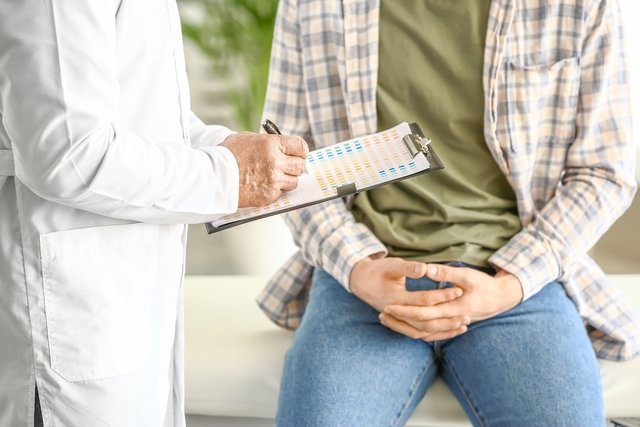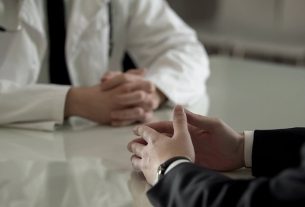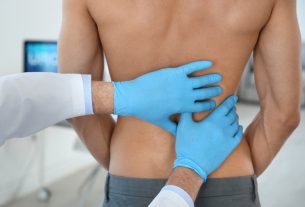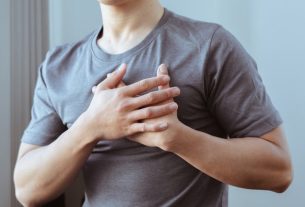Male candidiasis is an infection caused by excessive growth of the fungus Candida albicans in the man’s intimate region, resulting in inflammation of the glans and/or foreskin of the penis that leads to the appearance of symptoms, such as pain and redness, swelling and itching.
Male candidiasis is more common to arise due to inadequate intimate hygiene, resulting in excess moisture and accumulation of secretions under the foreskin, favoring the growth of the fungus. However, it can also arise due to some change in the immune system.
The treatment of candidiasis in men, also known as penile candidiasis, is carried out by a urologist who may recommend the use of antifungal remedies in the form of ointments or tablets, in addition to adequate intimate hygiene.
Symptoms of male candidiasis
The main symptoms of candidiasis in men are:
- Pain, burning, swelling and local redness in the glans or foreskin;
- Intense itching in the area;
- Reddish and/or whitish plaques on the penis;
- Whitish or transparent secretion that covers the reddish regions;
- Pain, discomfort or burning sensation when urinating;
- Dryness of the skin;
- Difficulty exposing the glans.
Furthermore, in some cases, sores may appear on the penis, increased sensitivity, bad odor and general discomfort. See other symptoms of male candidiasis.
In addition to appearing on the penis, candidiasis can also appear on the testicles or affect the groin, or in other places on the body, such as between the toes and inside the mouth.
Online symptom test
To find out your risk of having candidiasis, select the symptoms presented in the following test:
The symptom test is only a guidance tool and does not serve as a diagnosis or replace a consultation with a urologist.
How to confirm the diagnosis
The diagnosis of candidiasis in men is made by a urologist through evaluation of symptoms, health history and physical examination. Furthermore, in recurrent and atypical cases, laboratory tests may be requested to confirm the presence and species of the fungus.
In the case of male candidiasis that does not affect the genital region, the symptoms must be evaluated by a dermatologist or general practitioner, who will recommend the most appropriate treatment.
If you experience symptoms of male thrush, make an appointment with a urologist in the nearest region:
Taking care of your health has never been easier!
Possible causes
Candidiasis in humans is caused by excessive growth of the fungus Candida albicans, which causes inflammation in the intimate region, resulting in symptoms. Some factors may increase the risk of developing male candidiasis, such as:
- Inadequate intimate hygiene;
- Wearing tight underwear or wet clothes;
- Skin irritation caused by personal hygiene products or condoms with lubricants;
- Not drying the penis properly after showering;
- Weakened immune system;
- Decompensated or untreated diabetes;
- Not having been circumcised;
- Long-term use of antibiotics or immunosuppressive medications or corticosteroids;
- Intimate contact without a condom with a person infected with Candida albicans.
In addition, autoimmune diseases or chemotherapy treatment for cancer can also increase the risk of developing male candidiasis.
These conditions can favor the proliferation of Candida sp and result in inflammation in the glans penis, known as balanitis, or in the foreskin, called balanoposthitis. Understand what balanitis and balanoposthitis are.
How the treatment is carried out
The treatment of candidiasis in men must be carried out under the guidance of a urologist, who may indicate:
1. Ointments for candidiasis in men
Candidiasis ointments are antifungal ointments that act by inhibiting the growth of the fungus. Candida albicans.
The treatment time with these ointments varies from 1 to 3 weeks, and it is important not to interrupt treatment, even if symptoms improve within a few days. See the main ointments for candidiasis and how to use them.
2. Corticosteroid ointments
Corticosteroid ointments, such as hydrocortisone, may be indicated in cases of more intense inflammation in the genital region, to help alleviate symptoms. These ointments are often used in combination with antifungal ointments. Learn how to use hydrocortisone ointment.
3. Oral antifungals
In more serious cases, with more intense inflammation in the glans or foreskin, the urologist may also recommend the use of oral antifungals, which help eliminate the Candida albicans. Understand how treatment for male candidiasis is carried out.
4. Proper intimate hygiene
Adequate intimate hygiene is important during the treatment of male candidiasis, but also to prevent new attacks of candidiasis. Therefore, you should wash your penis by pulling the glans and always keep the penis clean and dry, in addition to avoiding the use of products that can irritate the skin and using a condom in all sexual relations, to reduce the risk of transmissible infections.
5. Diet changes
Diet changes can help cure candidiasis faster, reducing carbohydrate consumption and avoiding sweet foods and alcoholic beverages. Furthermore, it is recommended to consume probiotics, such as yogurt and kefir, for example, fruits and vegetables and whole grains, for example, as they help to strengthen the immune system to fight infection. See what the diet for candidiasis should be like.
To complement medical treatment, a good home remedy option for candidiasis is ginger tea, for example. Learn how to prepare home remedies for candidiasis.
How to prevent
To prevent male candidiasis, it is important:
- Perform intimate hygiene daily;
- Avoid wearing hot, tight or wet clothes;
- Sleep without underwear;
- Use a condom in all sexual relations.
Furthermore, it is important to strengthen the immune system, which can be done by eating a healthy, balanced diet and practicing physical activity daily.

Sign up for our newsletter and stay up to date with exclusive news
that can transform your routine!
Warning: Undefined array key "title" in /home/storelat/public_html/wp-content/plugins/link-whisper-premium/templates/frontend/related-posts.php on line 12
Warning: Undefined array key "title_tag" in /home/storelat/public_html/wp-content/plugins/link-whisper-premium/templates/frontend/related-posts.php on line 13




